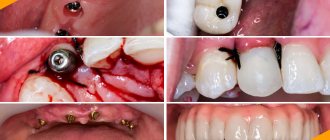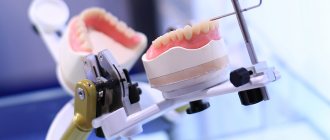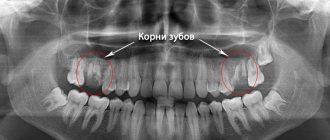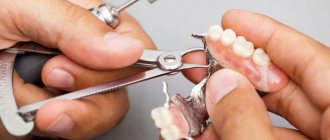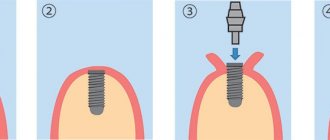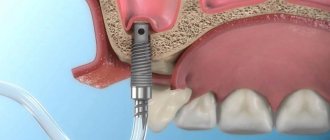Dentists joke that God gives teeth to a person for free twice, but you have to pay for the third. Teeth are not capable of self-healing. Losing even one is not as harmless as it may seem. In addition to aesthetic discomfort, facial features change, chewing function and digestion are disrupted. Dental implantation comes to the rescue - you can return a beautiful smile quickly and forever. Akhmedkhanov Said Rashidovich talks about all the nuances of dental restoration with implants.
How did dental implants come about?
Actors who win an Oscar usually thank God and their parents. People who, with the help of implantation, regain their teeth and a comfortable lifestyle, should remember the Swedish professor Per-Ingvar Brånemark with a kind word. Quite by accident, he revolutionized dentistry.
In 1965, Branemark conducted research with a group of scientists. The professor implanted a titanium capsule into the rabbit and was very surprised when he could not remove it. So a happy accident helped to establish that titanium fuses with bone. Branemark decided to use the discovery in dental prosthetics.
The first lucky person with titanium implants is Gust Larsson. A simple carpenter, like Professor Branemark, went down in the history of implantology. Larsson, 34, had a completely toothless mouth. Not life, but torment: eating, talking, smiling - everything is difficult. The man himself found Branemark, having accidentally learned about his experiments. There was nothing left to risk, and Larsson became the first person in the world to receive implants. The patient lived with them for more than 40 years, until his death, proving the effectiveness and reliability of the new method.
The first experiment was successful, but the patient Brånemark was in no hurry to declare a revolution in dentistry. The scientist spoke publicly about his discovery 20 years later. The message caused a sensation! An accidental discovery turned the world of prosthetics upside down and returned a comfortable lifestyle to toothless patients.
What is dental implantation?
Dental implantation is the implantation of an artificial root into the upper or lower jaw. The implant is titanium and therefore completely biocompatible. This reliable crown support consists of:
- titanium screw (implanted into the jaw during surgery);
- abutment (attaches to the implant, resembles a ground tooth).
The answer to the question of whether to undergo dental implantation is clear: of course, yes. Today this is the most advanced method of prosthetics.
Implantation with instant prosthetics
The photo shows one-stage implants.
Currently, a huge number of new implantation methods are being practiced, which differ in the shape of the selected implants and methods of dentures. But at the same time, they all have the same essence - the installed implants must immediately be connected to each other into an integral structure through a prosthesis (temporary or immediately permanent). When using one-stage single implantation, a crown is made, which is removed from the bite and it should not contain lateral contacts.
Photos before and after dental implantation
Surgery in the lateral part of the chewing teeth, in the area of the front teeth and with complete edentia.
Leading implant manufacturers
- Nobel Biocare (USA)
- Straumann (Switzerland)
- Astra Tech (Sweden)
- Alpha Bio (Israel)
- Ankylos (Germany)
- NDI Medical (Germany)
Consultation and diagnostics
Inspection (duration – 30-60 minutes).
- Visual examination by a dentist.
- Filling out a survey card indicating chronic diseases.
- Referral for CT scan and tests.
- Also at this stage, the doctor can advise which implants are best placed on the chewing teeth and which on the front teeth.
CT scan. Obtaining three-dimensional images that help to accurately determine the density and volume of the jaw bone, as well as detect the presence of cracks in the roots of the teeth. In addition, CT helps to choose which implants to place on the front teeth or molars (the exact angle of inclination of the titanium rod, its size, thickness and place of implantation are determined).
Analyzes (from 2 hours to 7 days). The doctor can give a referral for a blood test (testing for HIV and hepatitis, establishing glucose or fibrinogen levels, biochemistry).
The list is purely individual and depends on the clinical picture.
It is worth noting that in the absence of chronic diseases and pathologies, testing takes a minimum of time.
Dental implantation methods
A variety of dental implantation methods allow you to choose the ideal option for each patient.
One-stage
For those who do not want to wait a long time and who have no contraindications, dentists offer one-stage implantation with immediate loading. The peculiarity of the method is that the temporary prosthesis and implant are fixed in one step. Only a small incision is made in the gum. The temporary crown is replaced with a permanent one after 3 to 5 months. During this time, the dental implant finally takes root.
Two-stage
Two-stage implantation is time-tested. The operation takes longer, but the risk of complications is minimal - the doctor clearly sees what he is operating on by making an incision in the gum and folding back the flap. The abutment is installed six months after the implant has been implanted, the crown – a week after the abutment. This is a classic dental implantation, proposed by Professor Branemark.
One-step
Single-stage - implantation takes place simultaneously with tooth extraction. This is an ideal option for front teeth, when the aesthetic result comes to the fore. This technique is rarely used for chewing teeth.
Basic methods and methods for installing dental implants
It is in this section that we will consider all the basic techniques for installing dental implants. Regardless of what designs are used.
Patchwork method
The flap method (traditional and most common) involves the following manipulations - directly during the operation, that is, after going through all the preparatory procedures:
- anesthesia is administered,
- the gums are treated with an antiseptic solution,
- the gum is cut - one incision is made along and two across: this creates a flap that peels off, opening access to the bone tissue,
- using metal cutters, a hole is made in the bone tissue - a bed that exactly matches the size of the implant,
- the implant is screwed into the bone tissue and closed with a plug,
- The gum is returned to its place, stitches are applied.
Video showing how implants are installed using the patchwork method for two-stage implantation.
This is a very traumatic method of installing implants, after which the patient will have to recover for about 1-2 weeks. In addition, complications are possible: bleeding from the wound, sutures coming apart, pain, penetration of bacteria through the sutures, and, as a result, tissue inflammation and even rejection of structures. Most often, the flap method is used for single restorations and for classical two-stage implantation.
Surgical templates and guides help reduce complications with this installation. They allow you to avoid massive incisions and make the process of implantation simpler and uncomplicated.
Minimally invasive or transgingival method
The minimally invasive method is used mainly for express implantation using one-piece implant models. This method also has other names: transgingival, sutureless, bloodless, low-traumatic, non-surgical, and so on. All these names reflect its essence: implants are installed quickly and without severe tissue trauma.
New teeth in 1 day - All-ON-4 - 180,000 rub.
All inclusive!
3D modeling of the structure with a prosthesis, implantation of 4 Osstem implants, installation of a fixed prosthesis on the same day. Free consultation with an implantologist +7 (495) 215-52-31 or write to us
The minimally invasive method uses both two-piece classic (but rarely) and one-piece implants (most often), which are literally screwed into the bone tissue through the gum, without massive incisions, without peeling off the gum flap and without creating a full-size bed in the bone tissue.
One-piece structures have a solid structure, so after their installation the tip (abutment) remains above the gum - it can be used for prosthetics almost instantly. In two-piece models from some manufacturers, you can fix the abutment immediately after implantation and install a crown or bridge.
This method, relative to patchwork, has many advantages:
- reduction of operation time,
- relief of the patient's condition,
- reduction in the duration of the rehabilitation period due to minimal tissue trauma.
Patients note that recovery after a mini-surgery occurs in just a couple of days, and there is much less discomfort than after installation using a patchwork method. In addition, since there are no incisions, the risk of infection of the tissues around the implants is reduced - their rejection is almost impossible.
Video of implant installation using a minimally invasive method.
Using laser
Laser technology is not an independent method of implanting implants into bone. This is rather an additional technique that reduces tissue trauma. The laser is used primarily in the conservative flap approach when the gums need to be peeled off. In this case, the laser is an alternative to a surgical scalpel. It allows you to make a very thin incision with minimal trauma to the tissue. In addition, it disinfects the gums, stops (cauterizes) capillaries, which stops bleeding, and the tissues heal 2-3 times faster.
Lateral method
The lateral method is perhaps the most traumatic and risky of all. As a rule, massive plate and disc implants are installed laterally, which are integral with the abutment. To access the bone, a large flap of gum is cut and peeled off, including in the side of the jaw, then the doctor literally cuts out a hole for the implant with a special tool. An important feature: the resulting bed must ideally match the size and shape of the implant, which requires the doctor to carry out jewelry work. The implant is then inserted from the side and the gum is sutured. To stabilize the structure and prevent loosening of the implants, a denture is immediately installed.
This method is practically not used today: there is a high percentage of rejection of such implants due to severe trauma to soft tissues and, as a result, a high risk of inflammatory processes leading to loss of bone tissue around the implants.
One-step installation method
Implantation can be performed not only after a long absence of a tooth. Now there is a method of instantly replacing a removed tooth root with an artificial analogue. That is, the implant is fixed in the same hole (or next to it, if space allows) where there was just a living tooth, immediately after its removal. In this way, you can replace any number of teeth - at least one, at least all at once (which are subject to removal). But you need to understand that if the removal is urgent, and there was no preparation for implantation, then the one-step technique cannot be used.
Depending on the indications, either a classic two-piece or a one-piece implant can be installed. It will also be possible to immediately install a single crown (removed from the bite), a full-fledged extended prosthesis, or you can follow the traditional protocol - suturing the gum and leaving the implant alone. In the latter case, it will take time for the structure to engraft into the bone; it will be possible to switch to permanent prosthetics no earlier than in 3-6 months.
Stages of dental implantation
- Before implantation. Dental implantation, like any other operation, requires careful preparation. The result depends on this. The doctor must plan the implantation procedure as accurately as possible and identify all possible contraindications. At the first appointment, the implantologist asks general questions about your health. Referrals for tests and consultations with other specialists are provided if necessary. The oral cavity must be healthy - without caries and inflammation of soft tissues. A few days before surgery, you need to make an appointment for a cleaning.
- Anesthesia.
As a rule, local anesthesia is used for implantation. Modern drugs completely relieve the patient of pain and discomfort. If necessary, sedation or anesthesia is used.
- Implant installation.
If the dental implantation process proceeds without surprises, according to a pre-drawn plan, the operation will take 20 – 40 minutes. First, the doctor will install the implant, then check the degree of primary stabilization, and then decide whether to load it with a crown or not.
- Fixation of the crown.
A temporary crown is fixed if the dental implant is firmly anchored in the bone. In case of problems with the primary stabilization of the implant, only a gum former will be installed. A permanent crown can be placed after the artificial root has completely engrafted, after 3 to 5 months. An abutment will be fixed to the implant, and a permanent crown will be placed on it.
What is the implant installation method?
This means how the implant will be placed in the bone, what processes precede it and what processes complete it. And, starting the story about the methods of installing dental implants, you need to immediately understand the classification of this very installation. We will put the following factors into separate groups:
- preparation of the bone bed for the implant: flap method, minimally invasive, innovative laser,
- presence/absence of bone tissue atrophy: vertical or inclined installation,
- what type of bone will the structure be implanted into: cancellous, basal and cortical plate, into the zygomatic bone and other parts of the skull,
- the tooth was removed a long time ago or removal is still only in the plans - here the installation of an implant can be combined with this process,
- what implantation method is used.
How long does the implantation procedure take?
Installation of one implant takes no more than 20 minutes. The artificial root takes from 3 to 5 months to take root. The entire period of treatment and recovery may take a year. The time frame is different for everyone, depending on the number of implants - some need to have 6 or more teeth implanted, others only need one. The duration of the process is affected by the volume and quality of bone tissue. The jaws also have peculiarities. On the bottom, the dental implant fuses with the bone faster, in 3–4 months, because the bone is denser. In the upper jaw, its volume is smaller, because of this the period of osseointegration is longer, 5 – 6 months. The end of implantation is the fixation of permanent crowns. Occurs after the implant has completely healed.
Options for installing alternative implants
All installation methods discussed above are intraosseous – that is, implants are placed inside the bone tissue. The method is considered optimal - and currently all modern implants are installed this way. The metallic root becomes, in the full sense, a replacement for the natural one. The implant has a very similar shape, is located in almost the same place in the bone as the natural root (or affects additional deeper areas - as with basal and zygomatic installation).
But there are other options.
Intramucosal method of implant installation
The installation of intramucosal models does not take place in the bone, but only in the gum and slightly under it (so that the structure does not fall out). These implants are more like buttons rather than analogues of roots - after implantation, a prosthesis will be installed on such a “button”. Now the technique is already a thing of the past due to its low service life and the occurrence of complications (trauma and inflammation of the gums).
Endodontic-endosseous method
Another outdated method is endodontic-endosseous. Here, a thin awl-shaped implant, like a pin, is inserted into the root canal of the tooth, then partially extends beyond the root and is strengthened in the bone. The technique was used to fix a loose or broken tooth. But practice has shown that endodontic-endosseous implantation is difficult to perform, is not suitable for long-term restorations, and is applicable only in a very narrow number of cases (in single-rooted teeth with canals of a certain width).
Mini implantation
Mini-implantation can be classified as an intraosseous technique, but miniature and thin models sink into the bone very shallowly and therefore become loose over time. The fixation of the prosthesis, which also becomes mobile over time due to the wear of the fastenings, does not add comfort. Therefore, the global implantology community considers mini-implantation only as a temporary solution - while a person undergoes treatment. For example, if there are contraindications to more reliable methods of implantation.
Types of implant-supported prostheses
Implant-supported dentures are securely attached to the jaw. There are several types of orthopedic structures. Your doctor will help you choose the right one.
- Fixed dentures.
Crowns are installed on the implants; in appearance, such teeth are no different from real ones. The method is suitable for the loss of one tooth or several in a row. - Bridge-like fixed prostheses.
A bridge instead of single crowns is an economical option for the patient. Used for an area with several missing teeth in a row. Minimum – 2 implants. - Removable dentures.
As a rule, they are used for complete edentia. Installation on an implant ensures that the prosthesis will not fall out of the mouth due to reliable fixation. At the same time, it is easy to remove it by unfastening the clasps. The patient chews easily, diction does not change, and there is no gag reflex. - Conditionally removable dentures.
They are very similar to removable dentures, but they cannot be removed without the help of a doctor. The prosthesis is secured not with locks, but with screws. The most common installation methods differ in the number of implants on which the structure is attached. There can be a minimum of three, four and six titanium roots.
When is bone grafting necessary for implantation?
Replenishing bone deficiency in dentistry is carried out a little less frequently than installing dentures. Lack of thickness or height of the alveolar process is very common. Reasons that lead to the need for bone grafting:
- The patient had a tooth removed a long time ago, due to which the bone tissue had time to dissolve or become thinner. In such a situation, the gum becomes like a narrow comb.
- Congenital lack of bone tissue to install an implant of a certain size. When immersed in bone tissue, a minimum of 3 mm of margin is required on both sides to ensure that the artificial root remains firmly in place.
- The defect can be not only wide, as in the previous version, but also high. Then there is a risk of excessive immersion of the implant into the tissue or insufficient fixation.
- Inflammatory processes in the oral cavity that affect bone tissue lead to cell destruction and gradual thinning of the gums.
If you ignore the problem and install an implant without bone grafting, it will gradually become exposed and may fall out on its own. In addition, there will be an even greater loss of bone tissue due to degenerative phenomena in it. To cope with the situation, a large volume of bone grafting will have to be performed, which increases the risk of adverse consequences and complications.
Care instructions
Implantation of 1 tooth usually does not affect the patient’s lifestyle. Installation of several implants, and even with bone grafting, may cause slight swelling. The problem disappears 2 to 4 days after surgery. In order for the process of implant engraftment and restoration to be successful, you should listen to the doctor’s recommendations:
- At first, avoid too hot/cold food;
- chew on the side where there was no surgery;
- brush your teeth carefully;
- bathhouse, sauna – postpone;
- don't get too cold.
After bone tissue augmentation – sinus lift – there are more restrictions:
- do not fly on an airplane;
- don't dive;
- don't blow your nose;
- sneezing and coughing with your mouth open;
- do not drink through a straw;
After 3–4 weeks, restrictions are lifted. Aftercare after dental implants is no different from oral hygiene with your own teeth. It is also necessary to thoroughly brush your teeth, rinse your mouth after eating, and undergo hygienic cleaning every six months. Experts recommend adding an irrigator to a regular brush and paste. The device is especially useful after complex implantation with the restoration of a large number of teeth.
Indications and contraindications for dental implantation
Dental implantation can be used in cases where one, several or all teeth are missing. Many are afraid of this technique, considering it risky. The list of contraindications is not as long as it might seem.
Absolute contraindications:
- age (the jawbone is fully formed only by 17–22 years);
- blood clotting problems;
- oncological diseases;
- osteoporosis;
- recovery after myocardial infarction;
- cardiovascular diseases in the acute stage;
- diabetes mellitus in the stage of decompensation;
- connective tissue diseases;
- alcoholism;
- diseases of the skeletal system;
- disorders of the nervous system;
- chronic liver and kidney failure;
Relative contraindications:
- bearing and feeding a child;
- active smoking;
- abnormal bite (requires adjustment);
- acute periodontitis (requires treatment);
- tartar (requires removal);
- diabetes mellitus in the compensation stage;
- bruxism.
Pregnancy and breastfeeding are relative contraindications to dental implantation for women. But doctors still recommend postponing the procedure. Women expecting a child are generally not recommended to undergo surgical interventions without special indications, especially in the first trimester, when the formation of the baby’s vital organs occurs. Implantation is performed using local anesthesia, after the operation painkillers and anti-inflammatory drugs are prescribed, and X-rays are taken before implantation. All this is extremely undesirable for pregnant women. During pregnancy, immunity is reduced, and recovery after implantation may be delayed. Breastfeeding is another reason to postpone implantation: medications are prohibited, and stress may cause milk to disappear.
Preparation
Dental implantation is a surgical procedure, so a thorough and careful examination is required before it is performed. The diagnostic stage can take up to several weeks and includes the following mandatory procedures:
- visual examination by a dentist, assessment of the condition of the oral cavity;
- radiography - a targeted image of an area that provides information about the condition of the bone and root systems of teeth located nearby;
- CT or computed tomography is a three-dimensional image that allows you to determine bone density;
- orthopantomogram - a panoramic image, the results of which can be used to judge the volume and structure of the jaw bones, the relative position of the teeth;
- consultation with a general practitioner, ECG and laboratory tests: general blood test, coagulogram (assessment of blood clotting);
- consultations with specialized specialists if necessary: allergist, ENT specialist (important when restoring teeth in the upper jaw), endocrinologist, cardiologist, neurologist, etc.
Separately, it is worth noting the sanitation of the oral cavity. One of the stages of installing a dental implant is the elimination of existing diseases: it is unacceptable to begin intervention if there are inflammatory diseases of periodontal tissue, caries, damaged teeth or roots that need to be removed. Therefore, the doctor always recommends professional cleaning and treatment, if necessary, first.
The importance of the preparatory stage is difficult to overestimate: obstacles not identified in a timely manner can cause complications both during the operation itself and during the rehabilitation period. It is necessary to remember that:
- bad habits - smoking, alcohol abuse - can cause exposure of the upper part of the artificial root, resulting in periostitis;
- implantation can accelerate tumor growth in the presence of a malignant neoplasm;
- diseases associated with changes in blood clotting can cause bleeding during surgery;
- weakening of immune forces caused by serious diseases and systemic metabolic disorders will, at best, increase the engraftment period, and at worst, provoke rejection of the artificial root;
- the lack of bone tissue volume will not allow the implant to be securely fixed, and some features of the location of the maxillary sinuses (their bottom) can cause perforation and a number of complications associated with it.
Preparation is only part of the answer to how dental implants are placed. It can take from two weeks to several months. This stage takes longer if there is a need to remove roots or damaged teeth, carry out endodontic treatment or periodontitis therapy, or perform osteoplastic surgery (increasing the volume of bone tissue).
Bone grafting is a mandatory operation in cases where the bone’s own volume is not enough to install and firmly fix the implant. The doctor may suggest one of several methods depending on the clinical situation:
- method of directed regeneration - replanting natural or synthetic material to replenish the volume (it will take about 4 months for the material to engraft);
- replanting a bone block taken from another part of the body - this method is used in cases of bone tissue resorption (implantation is carried out 5 months after surgery);
- sinus lift - used when the height of the alveolar ridge of the lateral segments of the upper dentition is insufficient (an artificial root is implanted on average 5 months after surgery).
Feelings during surgery
Installing 1 implant feels like removing one tooth. Doctors make this comparison when patients ask them what to expect from dental implant surgery. In most cases, artificial roots are implanted under local anesthesia. But patients who begin to worry even before the operation begin are sedated with local anesthesia. This is not a painkiller, but a sedative, relieves stress, anxiety, and increases the pain threshold. The patient remains conscious, but in a state close to deep sleep. Painful impulses are blocked, fear and anxiety go away, while the contact between the patient and the doctor is maintained. After sedation, there are no memories of the operation, neither good nor bad.
Severe fear, particularly complex treatment, complex dental implantation - in these cases the patient can be put to sleep using anesthesia. He falls asleep with a toothless mouth and wakes up with teeth.
Stage 1: diagnosis
It may take some time to choose a clinic and an implantologist, since this is one of the key points in the whole story. In addition, you need to get to know the orthopedist and, if necessary, the therapist - these doctors will also take part in the process of implantological treatment. If everything is satisfactory, then before implantation an examination is carried out by a surgeon.
He will tell you whether it is possible in principle to place an implant in this patient, and will develop further treatment tactics based on the following data:
- general oral health;
- the presence and condition of neighboring teeth and gums, which are located next to the future implant root;
- bite;
- hygiene quality;
- financial capabilities of the patient.
The price is usually included in the total cost of treatment, which is carried out in most clinics on a turnkey basis. The doctor will announce the approximate cost, the final price is determined after diagnostic testing and consultation with an orthopedist. If a patient needs the help of a physician, hygienist or periodontist, then their services should be considered.
Diagnostics includes instrumental and laboratory studies, without which surgery is impossible. These examinations are necessary to exclude a number of complications after the introduction of implant rods and achieve extremely good treatment results.
Risks of implantation
The survival rate of implants today is a record 99%. But no one will ever give 100%; it is impossible to eliminate all risks. Someone will definitely fall into this 1%. Complications during implantation are very rare, but they do occur. During implantation of an artificial root, the following may happen:
- Inflammation of the tissue around the implant (peri-implantitis).
The doctor will rule out the cause of the inflammation and treat the root with special solutions. In case of relapse, the implant will have to be removed and the bone tissue will have to be restored. - Implant rejection.
It happens extremely rarely. The artificial root is removed. - The implant is unscrewed together with the plug.
This may occur during abutment placement. In the absence of inflammation, the titanium root is put in place. - The implant is pushed into the maxillary sinus.
In such cases, only removal of the titanium root will help. - Exposing the upper part of the implant.
A fairly common complication that affects aesthetics more than health.
Make an appointment
right now!
Akhmedkhanov Said Rashidovich
Surgeon, Therapist, Orthopedist, Hygienist, Implantologist
Possible complications after installation of implants
Complications during the first 3 years after implantation in 90% of cases occur through the fault of the implantologist - due to the inexperience of the doctor, poor planning of the procedure, or violation of the surgical technology. On the part of the patient, complications arise when the rules of hygiene and rehabilitation are not followed, and the implantation systems are overloaded with very hard food. The most common complications after implantation are damage to the lining of the maxillary sinus or trigeminal nerve, peri-implantitis and rejection.
[1] Kulakov A.A., “Bone grafting before dental implantation” / GEOTAR-Media, 2021 – 112 p.
Author: Vasiliev A. A. (Thank you for your help in writing the article and the information provided)
